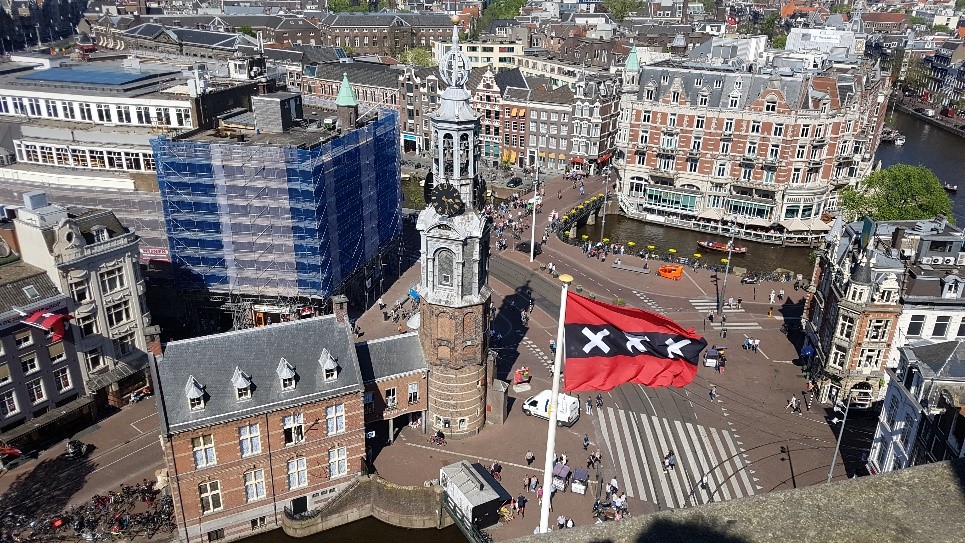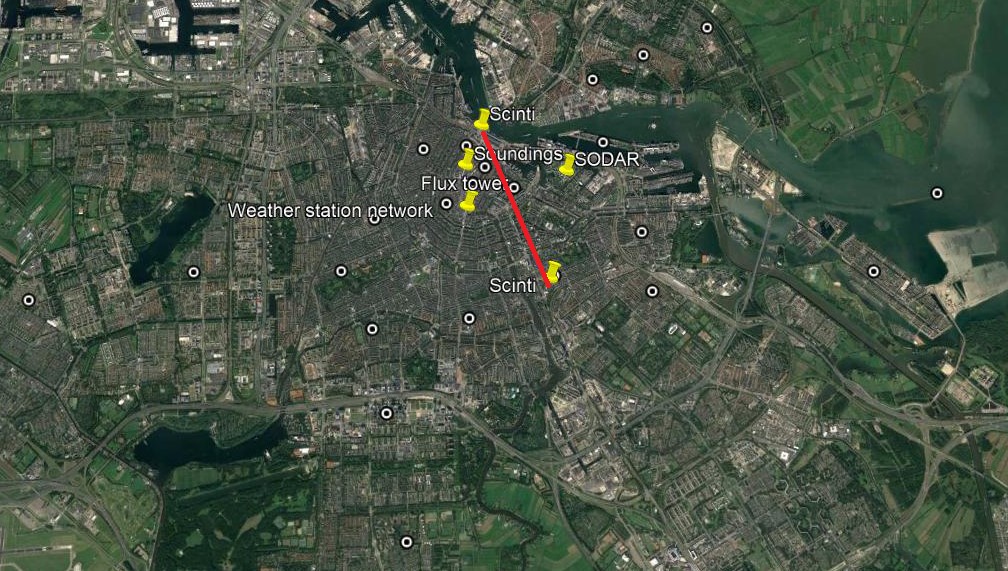Atmospheric Monitoring Supersite

Features
- Urban, 4th European harbour, 875.000 inhabitants in Amsterdam, 2.5 million inhabitants in wider metropole, 32 million tourists yearly.
- Urban surface radiation and energy balance, urban heat stress and human thermal comfort, urban heat island, greenhouse gases, GHG flux determinations
- Urban meteorology
Background
Amsterdam is the capital of the Netherlands, and is characterised by a high population density, combined with many economic activities related to tourism in the inner city, which raises environmental concerns of urban heat and air pollution. In addition, the city is famous for its high number of canals, and is as such a unique testbed. In addition, Amsterdam hosts the 4th European harbour and is located downwind of heavy industry in Ijmuiden (TataSteel). The city is facing challenges concerning the urban environmental quality due to climate change and expects higher frequency of extreme heat, droughts, and floods, and therefore urban climate adaptation knowledge has to be developed. Moreover the energy transition towards renewable energy (solar PV and wind) is on the agenda.
Rationale for including in Ruisdael Observatory
To develop knowledge about the physical processes and answer the questions raised by the municipality of Amsterdam how to cope with current and future urban climate challenges, the Wageningen University Meteorology and Air Quality section is operating a network of weather stations since 2014 and a radiation and energy balance station at the Munt square. From these observations we can infer the evolution of the human thermal comfort, heat stress in different neighbourhoods, and quantify the urban metabolism in terms of sensible heat, evapotranspiration and greenhouse gases. These observations are complemented by flux observations from a scintillometer that measures the area-averaged sensible and latent heat release. In addition, observations assist in developing the solar energy potential.
The Amsterdam Atmospheric Monitoring Supersite (funded by the AMS-Institute) consists of a network of 24 weather stations measuring temperature, humidity, wind speed in street canyons for the assessment of the urban heat island. This is complemented with a flux tower 40-m above street level that records surface fluxes, i.e. the shortwave and longwave radiation, as well as energy balance components sensible heat flux, latent heat flux, friction velocity. In addition, turbulent fluxes of CO2 and methane are recorded. During intensive observation periods these observations are complemented with radio soundings, SODAR observations of wind speed profiles, and traverse observations with a tricycle to measure physiological equivalent temperature.

Coordinator
Gert-Jan Steeneveld, Wageningen University, Meteorology and Air Quality Section.
Click here for an overview of urban station data for the city of Amsterdam for the summer of 2015. Data can be found here.
